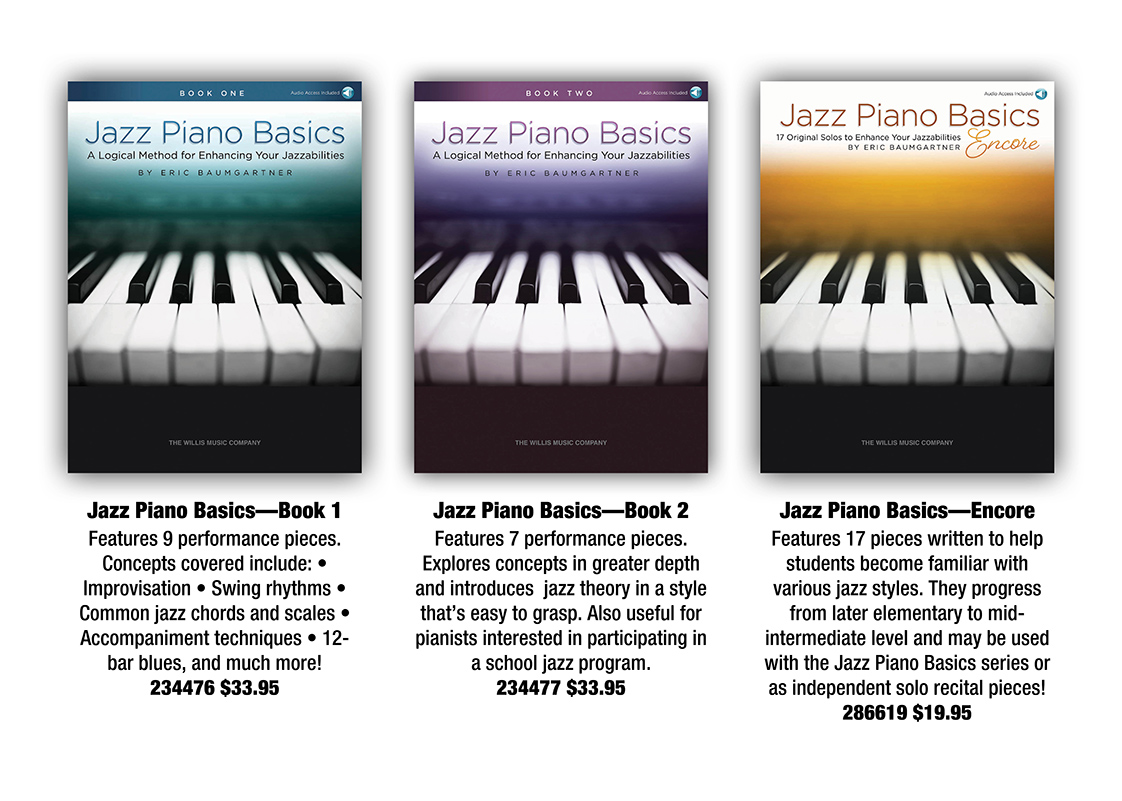
Improvisation can be a wonderful creative outlet for students. It encourages them to experiment and to explore new territory. Even a modest study of improvisation can yield a great many benefits, including improved aural skills and a deeper understanding of harmony. It seems most articles on improvisation, however, are geared towards the older, more experienced student. With this article I attempt to shift the balance! Below are a few simple improv activities you can use with even the youngest of students. Let’s begin with imitation – a fun and effective way to start.
Clap it!
Rhythm is the key to improvisation. A good rhythmic idea can yield countless melodic phrases. Therefore it’s important that a player develops a library of short, workable rhythms. The most effective way to build such a rhythmic library (as well as to build confidence!) is through imitation. We start with clapping. This allows us to focus exclusively on rhythm. To begin this game, clap out a one-measure phrase for the student to imitate. The tempo should be moderate, in 4/4 time. Feel free to repeat the phrase if the student clapped it back incorrectly. You may then move on, offering up different rhythmic patterns. For example:

Strive to give the student a variety of patterns. Starting on beat two (or the “and” of one) will lead to many new possibilities. You may also vary the dynamics, such as adding crescendo, diminuendo and/or accented notes.
Now challenge the student to respond with their own variation! Have them change the rhythm only slightly at first, by adding or subtracting a note or two. For example:

Even at this early stage some students will be ready for a heavier challenge. If so, expand the length of your questions to two measures. You may also switch roles – have the student create their own question for you to answer!
Feel the Beat!
Adding a percussion backing to this game can be great fun. Many keyboards include a percussion playback device, often with a variety of styles and beats to choose from. There are also plenty of free phone and tablet apps (just search for “percussion” or “drum”). Varying the style and/or the tempo of these grooves will help keep the game fresh and engaging. You may also explore other time signatures through these devices, such as a triple or compound meter (3/4 or 6/8).

Play It!
Now let’s move the game to the keyboard, starting with just one note. Play your rhythmic question on Middle C with the student responding an octave higher (or lower). Next, expand your questions to include a second note (D) and then a third (E). The student now has the added challenge of matching not only the rhythm, but the pitch sequence. Encourage them to play with confidence and authority, even when playing a “wrong” note. Just as done in the clapping game, the student may eventually create their own variations to the questions.
It’s time now for the student to take the lead. Sticking with just three notes (C, D, E) have them play their own one-measure question. Many students will start by playing one of the phrases they learned through imitation, which is a good thing indeed! Absorbing new phrases through imitation is vital in building up a good improvisational vocabulary. Have them stick to short phrases, no more than two measures in length, and separate each phrase with a measure (or at least two beats) of rest. The short phrases help keep their ideas strong and concise and the rests allow them time to think ahead to plan the next phrase. Encourage them to explore variations in rhythm as well as note sequence (or repeating notes). Once again, using a variety of percussion backing tracks will help keep things fresh and interesting. Adding a simple chordal accompaniment can be effective as well.
Games such as these needn’t take up much lesson time at all. A good deal can be accomplished in as little as two or three minutes! Work at a comfortable pace for each student. Some may be able to jump from step to step very quickly. For others, sticking to the initial clapping game might be plenty for a single session.
Of course, both you and your student may soon find yourselves running out of fresh ideas. This is only natural. It’s important for improvisers to continually seek out new sources to imitate and absorb. Fortunately, there is a wealth of fine resources available today for the young improviser. I might humbly suggest my own series, Jazz Piano Basics. It contains dozens of improvisation exercises with audio accompaniment tracks (both with and without recorded “questions” to imitate). Each exercise contains carefully crafted step-by-step instructions to guide you as the exercises expand to include more components of improvisation.
